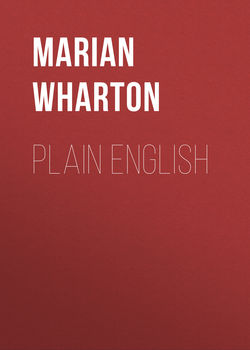Читать книгу Plain English - Marian Wharton - Страница 18
SPELLING
LESSON 2
ОглавлениеThe twenty-six letters in the English alphabet are divided into vowels and consonants. A vowel is a letter which represents a sound of the human voice but slightly interrupted by the vocal organs. The vowels are a, e, i, o and u. All of the remaining letters of the alphabet are consonants. A consonant is a letter which represents a sound of the human voice greatly obstructed by the vocal organs.
Consonant is from the Latin con, meaning with, and sono—I sound. So it means literally I sound with.
The consonants are produced by union of the breath with the vocal organs. The consonant sounds are so called because they are always "sounded with" a vowel; they are used only in combination with vowels in forming words or syllables.
In English a consonant alone never forms a word or a syllable. Sound the different consonants b, c, d, f, g, h, j, k, l, m, n, p, q, r, s, t, v, x and z, by themselves and you will see how the sound of the breath is obstructed or changed by the use of the vocal organs—the lips, the tongue, the teeth, etc.—in making these various sounds.
W and y are sometimes vowels and sometimes consonants. W and y are vowels when they are used with another vowel representing a vowel sound as in awe, new, joy, eye, etc. Y is sometimes used as a vowel by itself as in by, cry, etc. W and y are consonants when they are used at the beginning of a syllable or before a vowel in the same syllable as in wine, twine, yield and year.
Look up the meaning of the words in this week's lesson. Master the spelling and use them in sentences of your own construction.
Monday
Reason
Evolution
Justice
Thorough
Beauty
Tuesday
Assertive
Review
Surprise
Basis
Separate
Wednesday
Interrogative
Period
Capital
Capitol
Function
Thursday
Example
Contain
Imperative
Question
Speech
Friday
Method
Various
Familiar
Industry
Alphabet
Saturday
Travel
Sense
Cents
Sail
Sale
